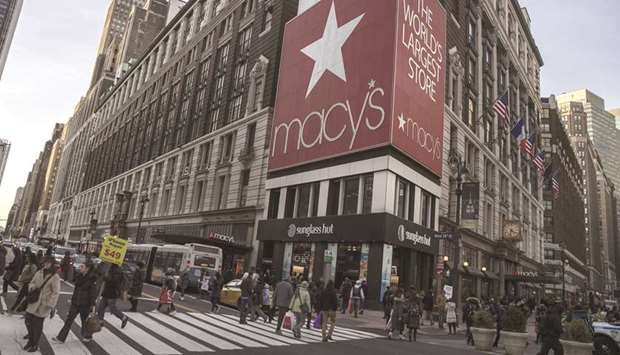Reports on the US economy Friday offered diverging signals for the current picture, though behind the numbers there were signs of a more upbeat outlook.
While Federal Reserve data for January showed the biggest drop in US manufacturing output in eight months, the Fed’s Empire State index, a survey of factories in New York state, showed expectations for business conditions six months ahead snapped back from the weakest in almost three years. The main regional gauge also rebounded and exceeded projections.
Meanwhile, the University of Michigan’s preliminary February survey showed that a better-than-expected improvement in consumer sentiment was concentrated in the outlook. The main measure exceeded forecasts as a component tracking consumer expectations rebounded from a two-year low with the biggest increase since August 2017.
Weakness in manufacturing production isn’t a concern as it was concentrated in motor vehicles and likely included the effects of bad weather, while the much larger contribution to the economy from consumers remains solid amid an improving outlook, according to Ian Shepherdson, chief economist at Pantheon Macroeconomics Ltd.
“Bad manufacturing numbers attract disproportionate attention, and it doesn’t look great, but if the consumer is doing OK then it’s pretty hard to see a drastic slowdown in gross domestic product growth,” he said. “You can have a manufacturing hit but it’s hard for the economy to roll over if the consumer is happy and has cash to spend, which they do.”
Consumer sentiment took a beating in recent months amid the longest-ever US government shutdown, but measures have shown improvement after Washington averted another closure while keeping trade talks with China moving toward an eventual resolution. The Bloomberg Consumer Comfort Index rose to the best level since early December last week as a gauge of views on the buying climate jumped to an 18-year high, according to a report on Thursday.
Also Thursday, a Commerce Department report — delayed four weeks by the shutdown — showed retail sales fell in December from the prior month by the most in nine years. Still, that also contrasted with retail strength in prior months, along with other economic data such as employment and wage growth that suggest consumers have the means to spend.
“Retail sales seems to be an outlier,” said Bank of America Corp economist Joseph Song, adding seasonal adjustment may have skewed December data to the weak side.
“Sentiment is in decent shape and job numbers are good. This suggests a growing economy.”

Pedestrians walk in front of a Macy’s department store in New York. Consumer sentiment took a beating in recent months amid the longest-ever US government shutdown, but measures have shown improvement after Washington averted another closure while keeping trade talks with China moving toward an eventual resolution.


